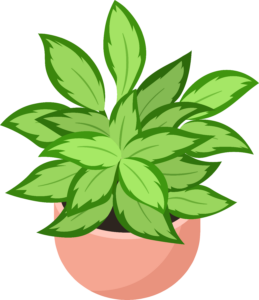By: Amirul Anirban, SFU Student and Gem Yelin Lee, Arts & Culture Editor
Although plants have many healing properties, they can be hard to grow as a student with limited free time and a home with limited sunlight. Plants benefit our health by ensuring a “healthier environment, more optimism, and lower stress and anxiety.”
Summer is just around the corner so without any more delays, gear up with your gardening arsenals and begin growing vibrant plants in your home! Here are some plants you can try to grow successfully in dorms and basement suites with limited lighting.
Chinese Evergreen / Aglaonema

If you are looking for a plant which can brighten any dark corners of your room, the Chinese evergreen is a top choice. It has vivid green foliage and is the best plant to start with because it requires less attention and time. Its known to be a low-maintenance plant that “grow[s] tall, narrow, and glossy oval foliage on short stems.” For a student who has to deal with a ton of academic work and exams but is also a nature enthusiast, the Chinese evergreen is the perfect plant to grow this summer. The plant grows slowly but surely, nestled in varying indoor spaces and students’ busy lives. They do well in student living space conditions that are typically not optimal for plants with little natural light or too much moisture.
Tips from for growing and maintaining Chinese Evergreen / Aglaonema:
- This plant does well even in fluorescent lighting, but avoid too much direct sunlight. It likes humid air and damp (not drenched!) soil so Vancouver climate is perfect for this plant.
- If you want to be extra good to your Chinese Evergreen, you can use indoor fertilizer biannually.
- If you begin to see different colouration on the leaves, make sure those areas of the plant get extra sunlight.
- Be careful! This plant can be toxic to animals and people if ingested and its natural plant juices can irritate skin.
Maranta leuconeura / Prayer Plant

Prayer Plants have bright, uniquely patterned leaves that grow lusciously in the space you give them. It is sure to make the dreary areas of your home come alive and acts as a natural air-purifier that will come in handy when you’re stuck indoors studying for exams. The name derives from how the leaves close vertically even at night, which resembles “prayer hands.” This house plant is grown for its “variegated green and cream leaves with bright red veins” and unique properties. It is another slow-growing plant and its height grows up to one foot.
Tips for growing and maintaining Maranta leuconeura / Prayer Plant:
- The plant grows well within the range of low to bright light. However, it prefers its leaves to be protected from direct sunlight.
- The plant favours a humid environment so make sure to keep the soil moist by watering it once a week with low-fluoride room temperature water.
- Prayer plants are also toxic for animals and humans.
- Can attract indoor pests so keep an eye out.
Aspidistra elatior / Cast Iron Plant

The cast iron plant got its name and reputation for how tough it is: if the plant can thrive outside with low sunlight in a shady forest, it can thrive in your basement suite with a bedroom window the size of your forearm. Who doesn’t want a friendly plant that can survive just about the worst of conditions and still play nice with others? This plant grows to be a bit bigger, up to 2 feet long and 4 inches wide. With its glossy, forest green leaves and air-purifying qualities, it is sure to add a homey and refreshing feel to your space.
Tips for growing and maintaining Aspidistra elatior/ Cast Iron Plant:




